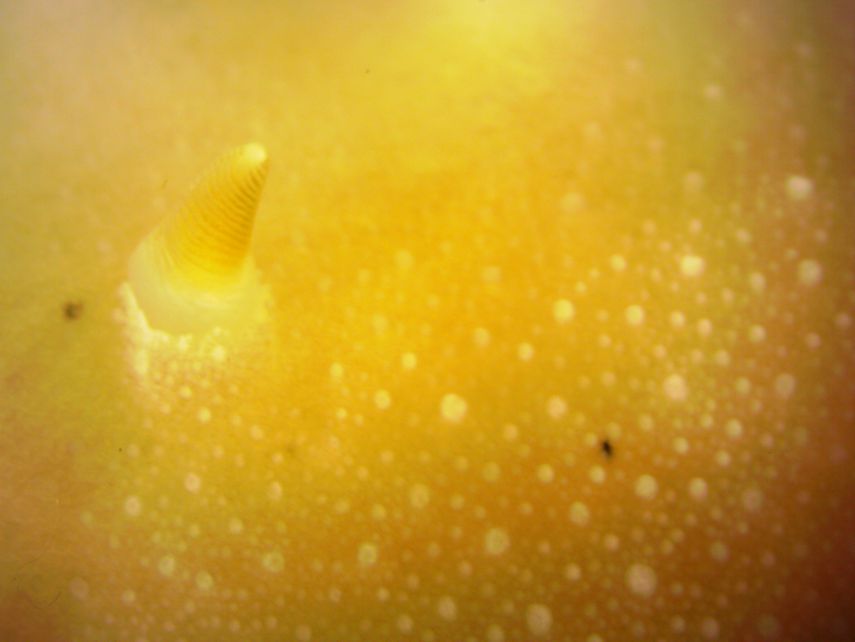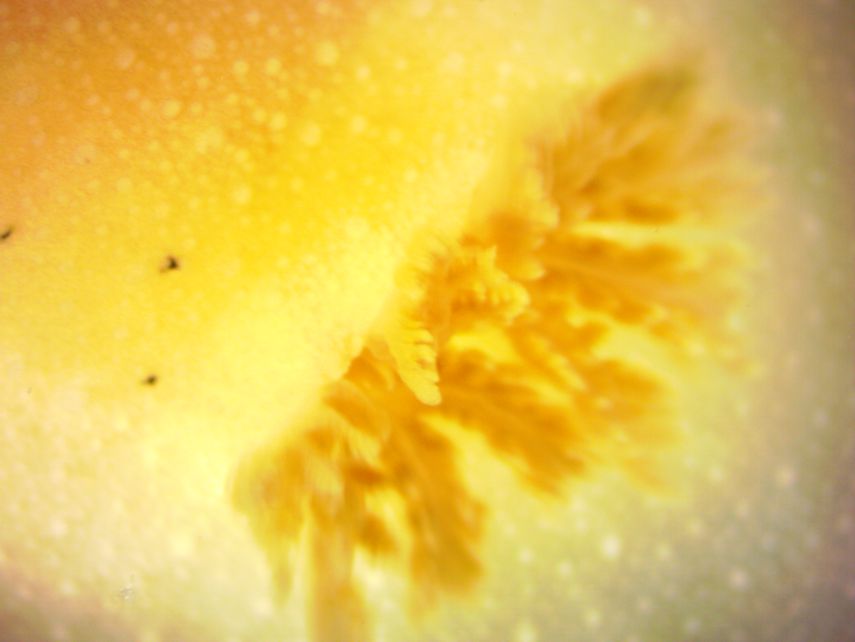Doris montereyensis (Cooper, 1862)Common name(s): (False) sea lemon, Monterey dorid, Monterey sea-lemon |
|
| Synonyms: Archidoris montereyensis | 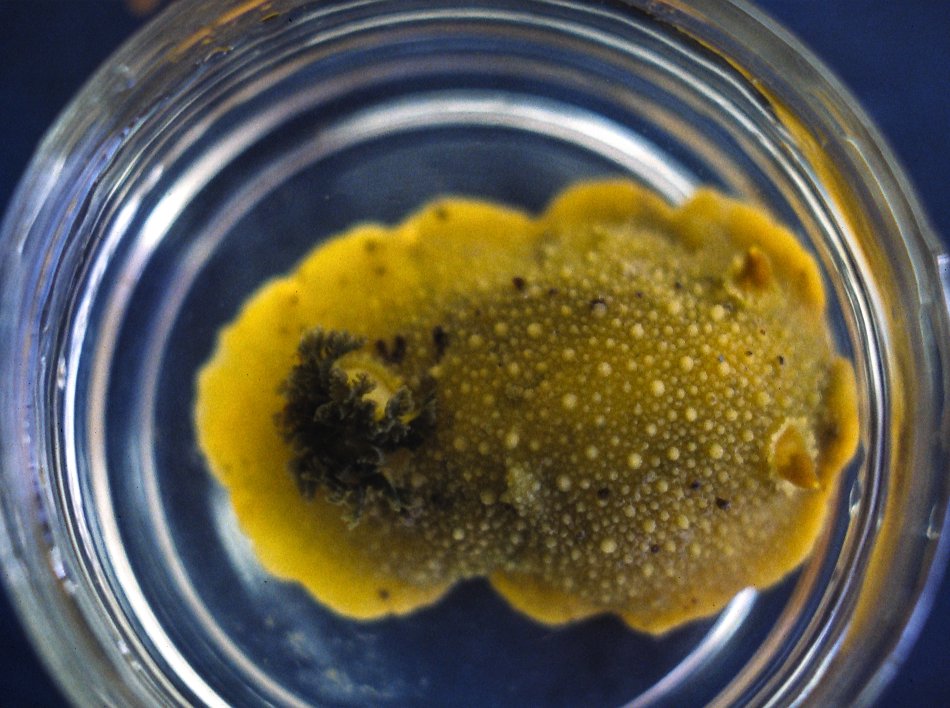 |
| Phylum Mollusca
Class Gastropoda Subclass Opisthobranchia Order Nudibranchia Suborder Doridina Family Archidorididae |
|
| Doris montereyensis from Sares Head. Approx length 8 cm | |
| (Photo by: Dave Cowles July 2000) | |
How to Distinguish from Similar Species: The sea lemon Peltoodoris nobilis has spots only between the tubercles, and the rhinophores and gills are lighter than the rest of the dorsum. This species does not smell and produces little mucus, while Peltodoris nobilis may give off sweet-smelling mucus when disturbed. This species' congener, Doris odhneri, does not have the dark spots on the dorsum
Geographical Range: Kachemak Bay, Alaska to San Diego, CA
Depth Range: Intertidal to 50 m. Common intertidally in north end of range, subtidal at south end.
Habitat: Rocky areas and pilings, open coast and protected waters.
Biology/Natural History: Feeds on yellow crumb-of-bread sponge Halichondria panicea, as well as other sponges. Animals are simultaneous hermaphrodites, lay eggs throughout the year. Non-motile sperm from partner is stored in a seminal receptacle for some time before the sperm become motile and fertilize the eggs as they are laid. Eggs are in capsules of several eggs each, which are then formed into a narrow cord which is folded into a bright yellow or cream gelatinous ribbon of about 2 million eggs. The ribbon is attached in a coil by one edge to a hard substrate. Egg masses exposed to the light have higher mortality rates. Eggs hatch in 20-25 days, trochophore larvae settle within about 2 hours of hatching.
Sponges which live on the motile scallop Chlamys hastata are less vulnerable to predation by this nudibranch.
According to Baltzley et al., (2011), many gastropods, including this species, have a special network of pedal ganglia in their foot which assists in crawling. The two main neurons involved produce pedal peptides which elicit an increase in the rate of beating of cilia on the foot, resulting in crawling.
| Return to: | |||
| Main Page | Alphabetic Index | Systematic Index | Glossary |
References:
Dichotomous Keys:Kozloff 1987, 1996
Smith and Carlton, 1975
General References:
Behrens,
1991
Kozloff,
1993
Morris
et al., 1980
O'Clair
and O'Clair, 1998
Scientific
Articles:
Baltzley, Michael J., Allison Serman, Shaun D. Cain, and Kenneth J. Lohmann, 2011. Conservation of a Tritonia pedal peptides network in gastropods. Invertebrate Biology 130: 4 pp. 313-324
Bloom, S., 1975. The motile escape response of a sessile prey: a sponge-scallop mutualism. J. Exp. Mar. Biol. Ecol. 17: 311-321
General Notes and Observations: Locations, abundances, unusual behaviors:
These nudibranchs are quite common around Rosario, and also on the open coast of Washington.
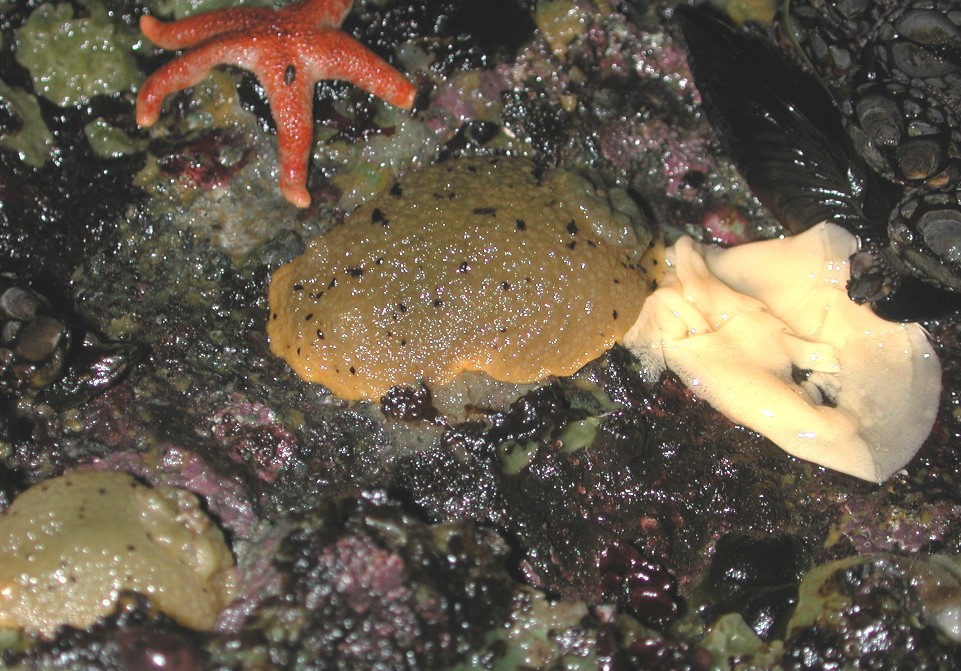
This individual, found in a sea cave at Cape Flattery, appears to have
just finished laying eggs. Note the second individual
nearby.
Nudibranchs are usually hermaphrodites but fertilize one another.
There were several aggregations of 2-5 individuals of this species
on the rocks in this cave. Photo by Dave Cowles, July 2008
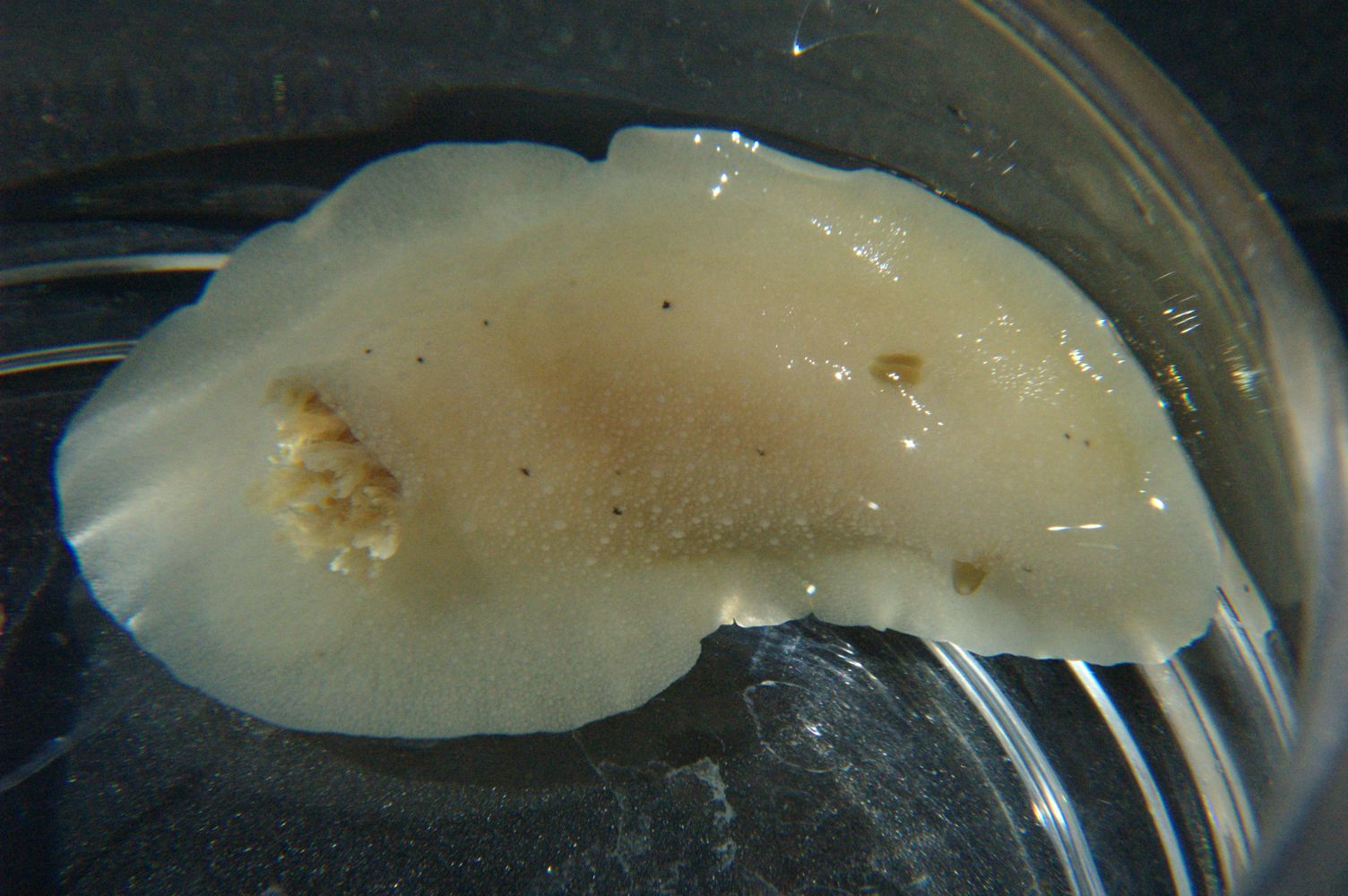
This 7-cm individual is quite light in color and has only a few black
spots, but nevertheless keys to this
species. Found subtidally at Sares Head.
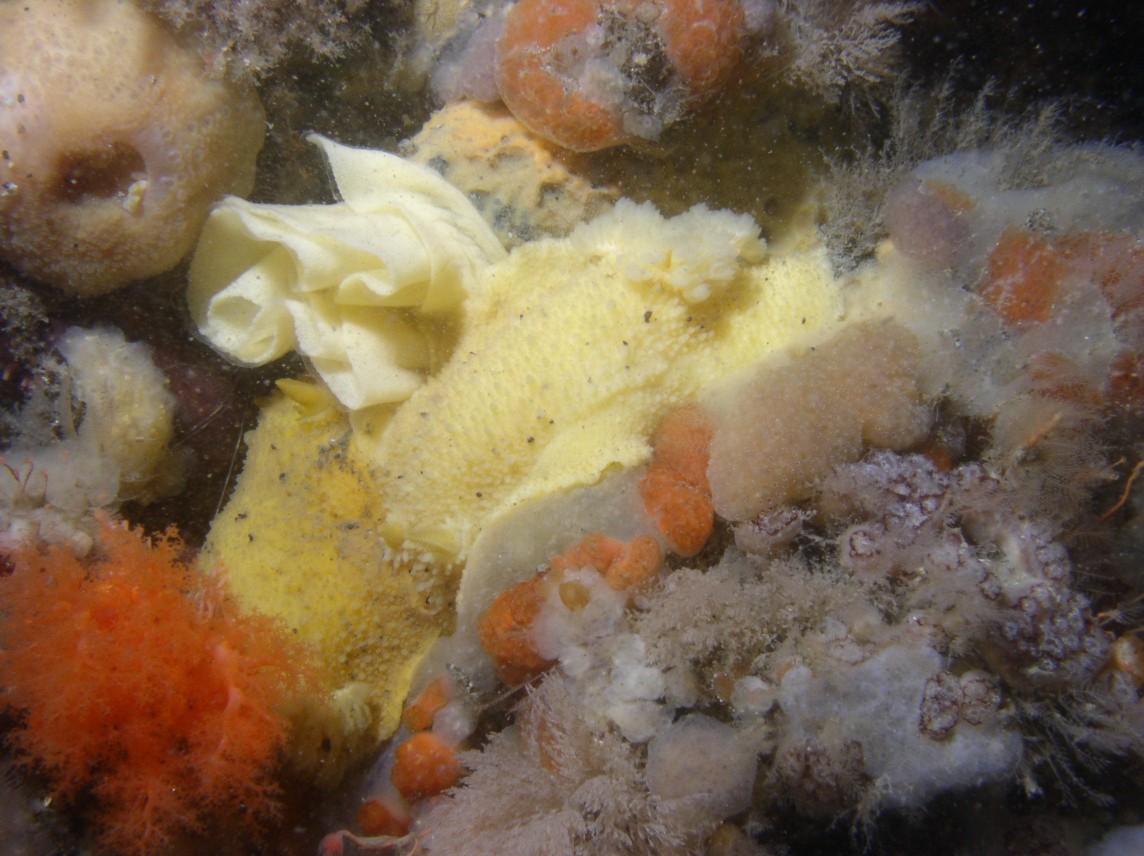 |
| An underwater photo of two individuals, at least one of which appears to be laying eggs. Photo by Kirt Onthank, August 2007 |
Authors and Editors of Page:
Dave Cowles (2005): Created original page
